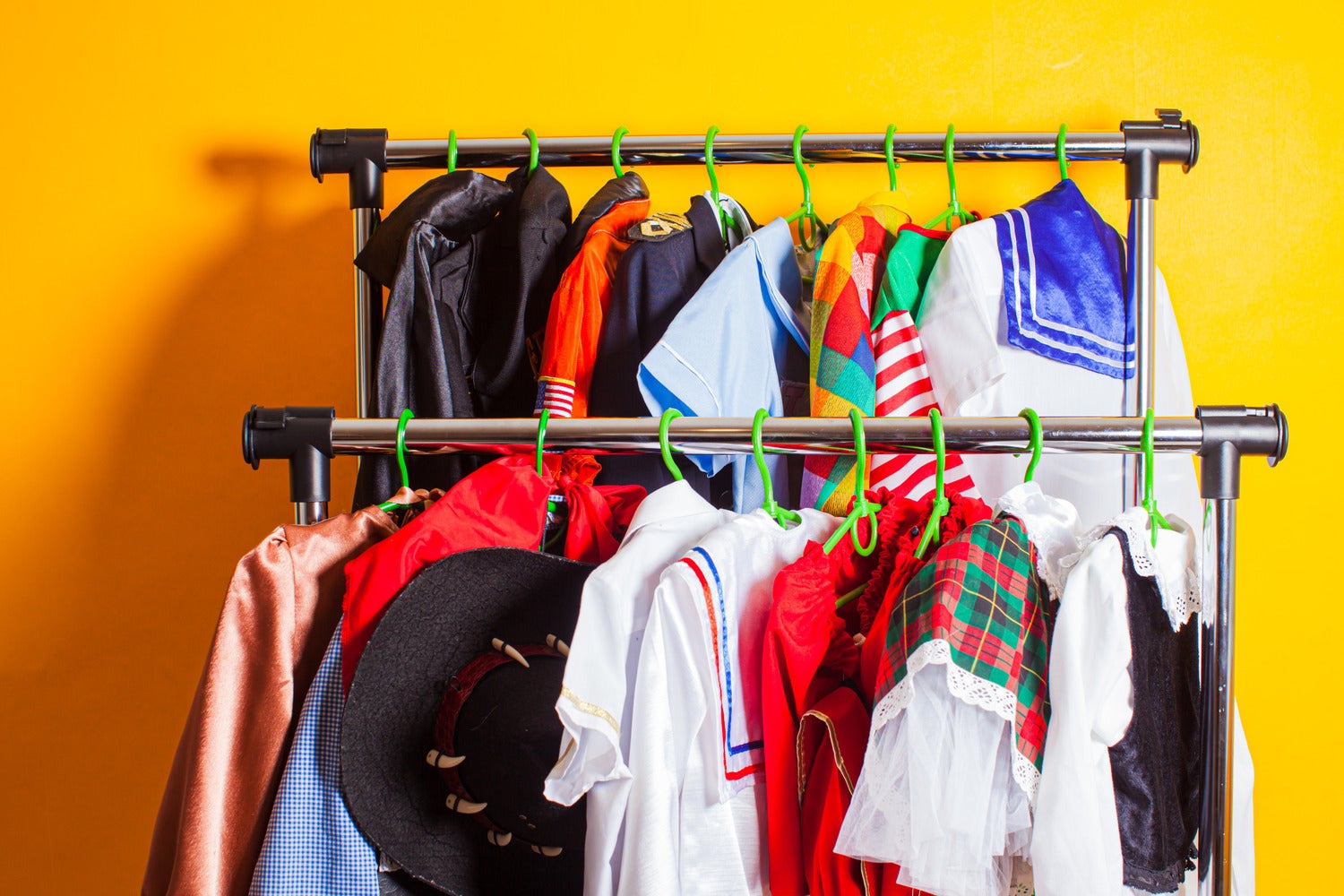Spooky season is upon us, and along with the witch hats, pumpkins, and pillowcases full of fun-sized Reese’s cups comes a somewhat frightening amount of trash. Across the U.S., consumers will spend around $3.8 billion on Halloween costumes alone, according to the National Retail Federation. While we don’t have an exact number for how many ghoulish garbs Americans toss annually, we do have some hints: For instance, according to a 2019 study from environmental charity Hubbub, U.K. shoppers toss out a ghastly 7 million costumes every year, and the U.S. population is nearly five times as big.
It’s not just our shopping that’s the problem. According to Hubbub’s analysis, around 83% of those getups are made with plastic, which can create a haunted houseful of issues. Duds made with polyester make up around half of the clothing sold in stores. When this bevy of castoffs hits the landfill, it can take 200 years to decompose, all the while leaching microplastics and other additives into our ecosystems. Even clothing recycling programs are likely a dead end: Polyester is nearly impossible to recycle.
Spooked? Us, too. But we’ve got a treat: Sustainable Halloween costumes are possible, no matter how complicated your look is. These are our three best tricks for putting together a killer look without being a planetary nightmare.
Good: Focus on accessories
We at one5c aren’t here to squash your kids’ fun, but when you’re planning their costumes remember a simple truth: The right accessory can make an outfit. If your wee one is obsessed with, say, fairies, consider investing in a well-made pair of wings over cheapies from Walmart. Etsy is a great resource for finding alternatives (how stinkin’ cute are these handmade, cotton-lined wings?) with the double whammy of supporting small artists. Not to mention, a lot of accouterments can adapt into a range of getups in the future; those wings could help sell an angel, butterfly, or bird. Plus, when your kiddo inevitably grows weary of the piece, a well-constructed item should still be in good enough shape to donate or swap.
Of course, this advice doesn’t just apply to the young ’uns: If a hat or belt or pair of shoes is crucial to your Halloween look, be ready to rev it up again for spooky season next year. Spending a little extra cash on a high-quality blonde wig, for example, can make sure that this year’s Sabrina Carpenter can become next year’s Barbie or Britney Spears.
Better: Swap and thrift
The ideal Halloween getup is one that already exists. That’s where costume swaps come in. Local governments, libraries, day care centers, and other venues invite folks to drop off their items and browse what other shoppers have brought. Some don’t even require you to bring a costume in order to shop, so it’s OK to show up empty-handed. To find a swap, start by checking your local library’s or government’s website, or plug “halloween costume swap [your city]” into your search engine of choice. If going in person doesn’t fit your schedule, try searching for local Facebook and Buy Nothing groups. Or, if you’re not seeing anything nearby, here’s a quick overview about what it takes to host your own swap.
The other option for pre-loved Halloween looks is to hunt through your local thrift store. If you’re not used to wading through the racks, it can be overwhelming, so it’s a good idea to go in with a little inspiration in mind. This guide is full of costume ideas and helpful tips, including ways to spot finds that will stand the test of time, like “free size” clothing that will fit for years to come.
Best: Shop your closet—and DIY the rest
Before running to the shops or the swaps, take a look in the closet, because there’s a lot in there you can center a costume around. Consider, for instance, the little black dress, which can be a foundation for becoming anyone from Posh Spice to Ruth Bader Ginsburg. A pair of overalls can transform into perfect looks for a scarecrow or even Princess Diana. And a simple black-and-white striped top can sell a mime or the Hamburglar.
When it comes to DIY-ing a costume, the recycling bin and linen closet can also be your BFFs. Bedsheet ghosts are still iconic (and as easy to pull off as you’d think), cardboard boxes can turn into anything from Spongebob and UFOs to the building blocks for a whole family of Legos. If you’re feeling more ambitious—and comfortable with a sewing machine—clothing scraps and natural dyes can turn trash-bound textiles into pirate, witch, and mummy costumes with a little skill and patience.

